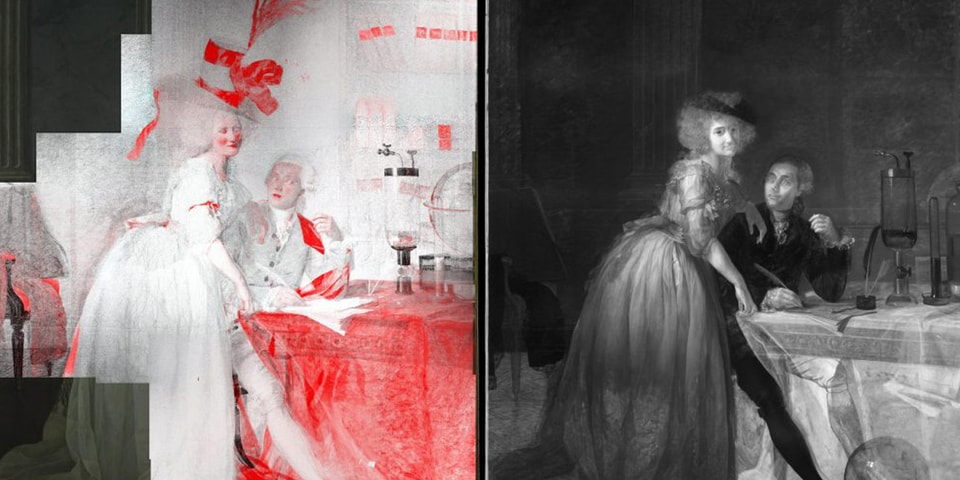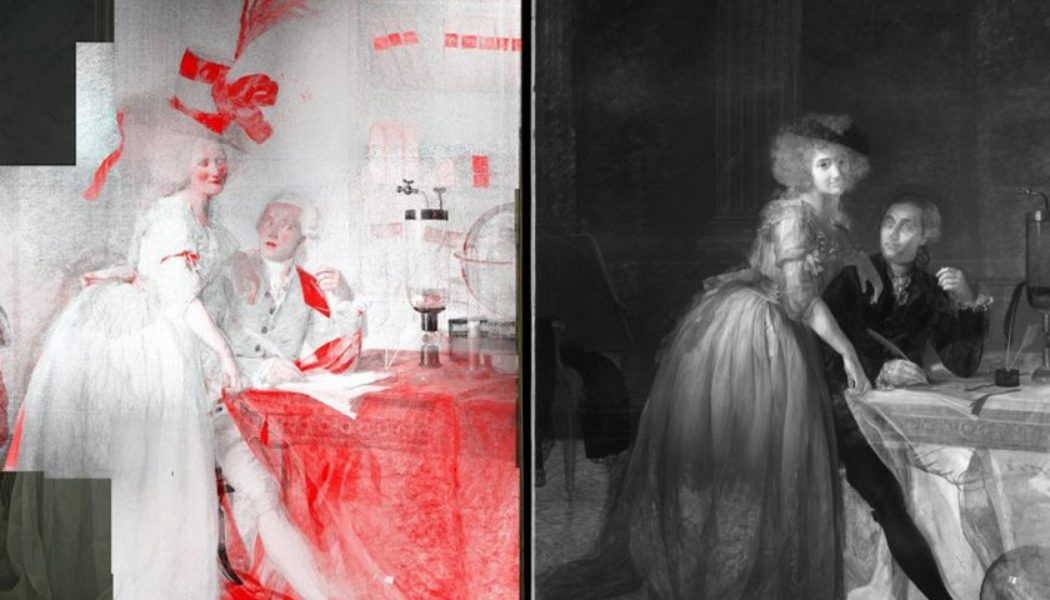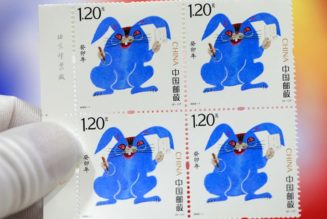
Several years ago, the conservation lab at the Metropolitan Museum of Art received a painting by the 18th Century French artist, Jacques Louis David. The task was to simply remove varnish to make the work look anew. However, after years of analysis under an extensive process of infrared reflectography and macro X-ray fluorescence mapping, researchers have discovered an earlier composition hidden beneath the surface.
David’s painting, Antoine Laurent Lavoisier (1743–1794) and Marie Anne Lavoisier (Marie Anne Pierrette Paulze, 1758–1836) (1788) was completed in 1788 and depicts Laurent Lavoisier, a chemist who contributed to many key breakthroughs in the field of chemistry. Amongst his accolades was the creation of the metric system, along with the discovery of oxygen and hydrogen. Standing above him is his wife, Anne Marie, who appears to be nonchalantly hunched over her husband, who is toiling away with intricate scientific instruments.
What the scans have revealed, is that David’s original painting shows Mademoiselle Lavoisier with an enormous hat decorated with ribbons and flowers. Additionally, the table that her husband is working at was not red at all, nor did it contain any instruments, but was lavishly made of gilt bronze.
What is noteworthy of these findings is the two depictions of the Lavoisier’s. The representation we’ve come to know is of the humbled scientist toiling away for the progress of society. Whereas, on the other hand, the original depiction shows them as the privileged tax collectors they were equally known as. The Lavoisier’s were active members of various groups associated with the Ancien Régime (Old Regime), which was the dominant socio-political system of the Kingdom of France from the late-Middle Ages till the French Revolution. The hidden composition reflects Lavoisier’s indulgence in status, luxury and consumption — a reputation that ultimately led to his his death by guillotine in 1794.
The painting was originally supposed to debut in 1789, but the artist was notified to withhold it in the wake of growing tension that culminated in revolution. The delay inevitably influenced David to strategically overpaint the original depiction to blend in with the changing social landscape. David’s painting finally debuted a century later at the 1889 Exposition Universelle.
Elsewhere in art, Tyrrell Winston will unveil a new solo exhibition at Stems Gallery in Brussels.









